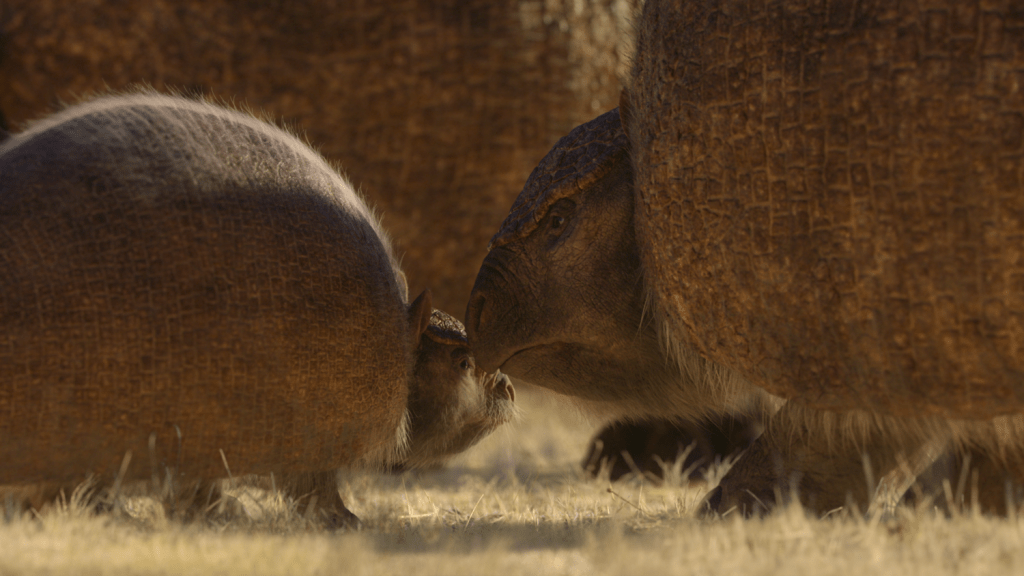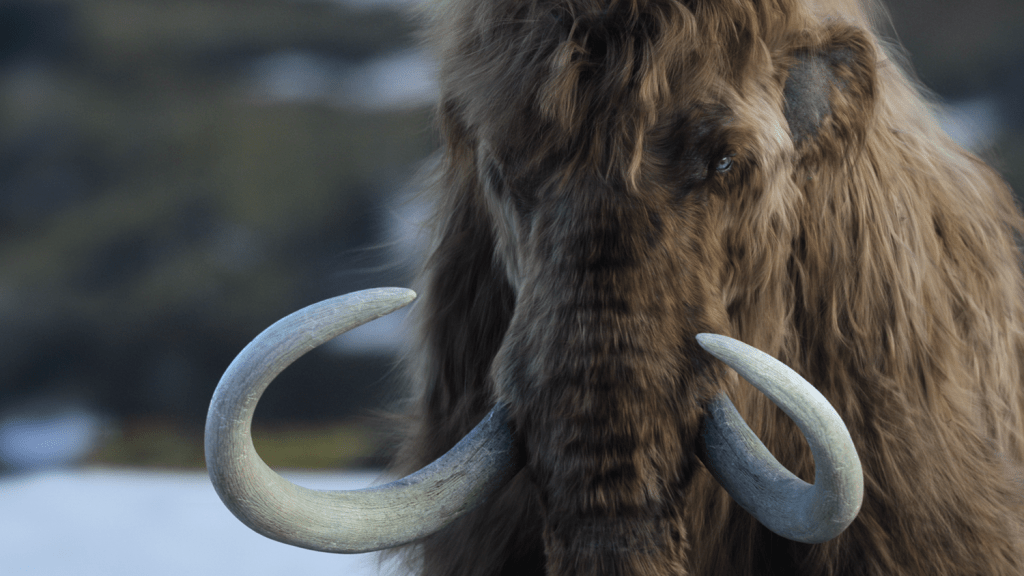Netflix has already impressed audiences with natural history documentaries like Our National Parks, Our Planet, and Our Universe, and with their latest series, Life on Our Planet, audiences will be taken back millions of years into Earth’s history to see the kinds of creatures that used to roam freely around the globe. Understandably, rather than being able to capture actual footage of the creatures, the series brings together natural history photography with groundbreaking visual effects to immerse audiences in these ancient worlds. From the Emmy Award-winning team behind Planet Earth and Our Planet, the series is narrated by Morgan Freeman and produced by Steven Spielberg.
Videos by ComicBook.com
To celebrate the series, we’re spotlighting a number of compelling creatures you’ll be meeting in the program, including well-known fan favorites and species you may have never even heard of.
Netflix describes the series, “This is the story of life’s epic battle to conquer and survive on planet Earth. Today there are 20 million species on our planet, yet what we see is just a snapshot in time — 99% of earth’s inhabitants are lost to our deep past. The story of what happened to these dynasties — their rise and their fall — is truly remarkable. In partnership with Industrial Light & Magic, the series uses the latest technology and science to bring long-extinct creatures back to life, Life on Our Planet reveals the incredible story of life on our planet.”
Scroll down to learn more about the prehistoric creatures before Life on Our Planet premieres on Netflix on October 25th.
Meet Arthropleura

Roaming the vast swampy forests of Pangea more than 300 million years ago,the mega-millipede Arthropleura was a titan of its age.Measuring more than 2.5 meters long and 50cm wide,it was the biggest millipedeto have ever walked the earth. They grew so large partly because back then, oxygen levels were 60% higher than they are today which allowed them to become turbo-charged giants!
Meet Arandaspis

One of the first fish, Arandaspis lived in the Ordovician seas amongst trilobites, sponges, and Cameroceras, a giant shelled cephalopod and one of the first sea monsters! Faced with such formidable competition, it’s easy to think that this curious fish, with its resemblance to E.T., may have been but a footnote in history. But think again, because Arandaspis has secret skills. First, he has a backbone, a major evolutionary development, and can swim with both speed and agility. But second, he’s small…and when the ice age hits, his small, adaptable nature is what allows him to survive while others fall. And today, 470 million years later, we exist because of him.
Meet Anchiornis

Anchiornis is one of the first flying dinosaurs and the forebearer to birds the world over. See Anchiornis in all her feathered glory in Life on Our Planet; tantalizingly close to how the actual creature would have looked when it graced the Earth 160 million years ago. That’s because Anchiornis has one of the best preserved fossils of all — not just its skeleton but scientists have also been able to determine its precise color,just as seen in the show!
Meet Cameroceras

Cameroceras patrolled the shallow seas around 475 million years ago and it was a creature not to be messed with. An ancestor of today’s octopus and squid, this 8-meter-long, original sea monster possessed a long, cone-like shell that housed its body, from which an array of tentacles emerged. Like its descendants today, it boasted an incredible set of senses and could even hunt its prey through touch.
Meet Doedicurus

The baby Doedicurus is perhaps the cutest creature in the series — an animal the show’s producers definitely wish hadn’t gone extinct. The adults are impressive too — the size of a small car, they are protected with a thick shell. But unlike others in their family, Doedicurus are also armed — boasting a huge mace-like tail that inspired its name, meaning “pestle tail.” Despite their seemingly cute appearance, they weren’t to be missed with.
Meet Lystrosaurus

Lystrosaurus lived in the mid-Permian to early Triassic — 260-240 million years ago. This curious pig-sized proto-mammal was initially nothing special, living a “bottom-of-the-food-chain” lifestyle. But then the Permian Extinction happened and Lystrosaurus inherited the earth. The skills that previously weren’t all that became game-changers when the apocalypse struck — being small, able to live in burrows, and the ability to eat pretty much anything suddenly let Lystrosaurus thrive when others did not. So much so that in the years following the mass extinction Lystrosaurs made up 75% of all vertebrate life on land — something no other animal has done before or since.
Meet Smilodon

Smilodon is one of the most recent extinct animals to feature in Life on Our Planet, disappearing only 14,000 years ago. Before its demise, it was the most fearsome predator of the time — not least because of the way it used its saber teeth. Unlike modern-day cats, it didn’t kill its prey through asphyxiation, instead it used its teeth to slice open the throat of its victims. Smilodon translates as “carving knife tooth” and with good reason!
Meet Terrorbird

Rising up to replace the void left after the dinosaurs’ demise, Terrorbirds definitely lived up to their name! Almost 3 meters tall, armed with sharp talons and a lethal ax-like beak, they were the dominant predator in parts of South America. While their huge size meant that they could no longer fly, they were instead able to run at great speed — more than matching today’s ostriches, but with a killer instinct to boot.
Meet Tyrannosaurus Rex

T-Rex in many ways needs no introduction — it is, after all, the most famous prehistoric creature of them all. Life on Our Planet‘s T-Rex was built using the latest scientific discoveries, discoveries which shaped everything about the way it is depicted: In terms of “looks,” that means its size, its posture, its quill-like feathers, its lips, and its coloration. But science also determined the way it behaves in the series — the way it runs (or lumbers), the way it lives with juveniles, and the way it may have undergone courtship. We know thanks to MRI scans of their fossils, that T-Rex had a huge number of sensory receptors on its lower jaw — the same as some modern-day birds — and it’s thought that these played a crucial role in courtship… Perhaps their reputation as being vicious and at times vengeful is misplaced.
Meet Woolly Mammoth

This series brings back to life creatures that have never been depicted before as well as more iconic species like the wooly mammoth, a tremendous-looking creature that roamed through the ice age. Remarkably, they only went extinct around 4,000 years ago, but because scientists have found remains frozen in the permafrost, bringing these immense beasts back to life — for real — may not be impossible.
Life on Our Planet premieres on Netflix on October 25th.
Are you looking forward to the new series? Let us know in the comments below!








